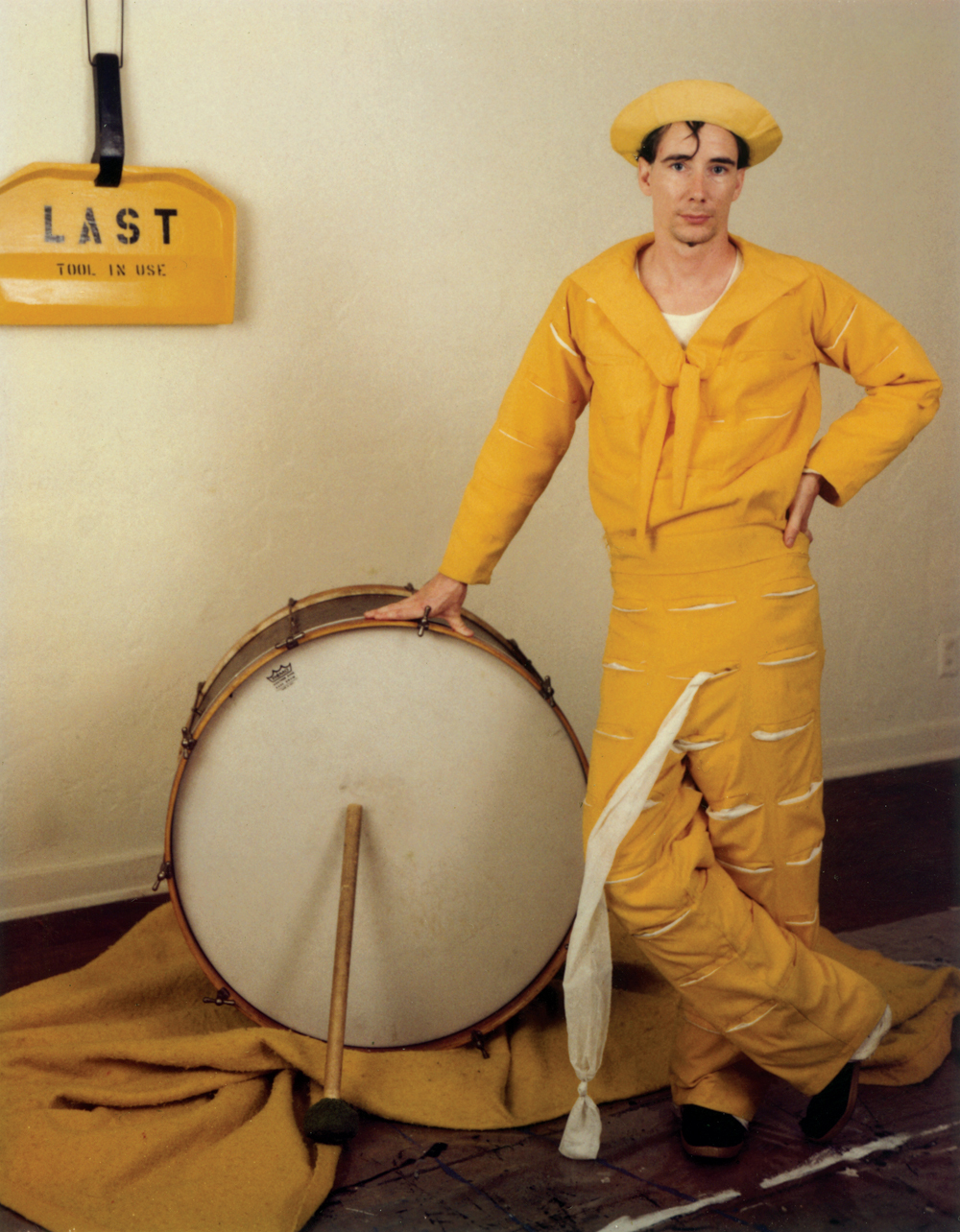
The Banana Man (1983)
Mike Kelley
28.15 minutes
Written in 1981 and shot in 1982 while I was teaching a performance/installation class at the Minneapolis College of Art and Design,1 The Banana Man was my first completed video work. Basically it is a one-person affair, though several of my students assisted and performed in the project. The tape was my attempt to deal with the problem of character, the subject of much discussion at that time in relation to performance art.2 In my own performance work, character was a function of language. As ideas shifted, so did one’s understanding of who was talking: unlike traditional theater, there were no consistent characters. I realized I could never deal with all the material I had written about the Banana Man in a live performance because it was character-based. I felt that the character would ground the piece too much, and prevent the kind of temporal confusion I was interested in. No matter what happened or how the ideas would flip, the viewer could always resort to this stable character as the “logic” of the piece. This is why I decided to present the work in video. Because of the conventions of editing, video and film tend to normalize fracture. The viewer is expected to jump from one image to the next and experience it as a seamless development. To me, this experience of seamlessness seemed to correspond to the notion of unified character. As film viewers try to normalize time, so they also attempt to normalize character. No matter how inconsistent their actions are, actors are seen as portraying “beings” driven by some unifying “psychology.” The viewer’s job is to figure out what that is. In The Banana Man, I was interested in this impulse toward unification. The tape is a series of scenes about one character, and it is up to the viewer to come to terms with what this character is.

The Banana Man character derives from a minor figure on the Captain Kangaroo children’s television show, named Banana Man.3 When I was young, this character was the object of discussion and jokes within my group of friends. However, because the character was rarely on the show, and never happened to be on when I was watching, I never actually saw him. Thus, everything I know about the character is hearsay. This is what I was told:
1. The Banana Man had many pockets out of which he pulled long things, such as toy trains and strings of hot dogs.
2. Whenever he did this, he made an “ooohing” sound (and this was the only sound he made). He did not speak.
Given this small amount of information, The Banana Man is my attempt to construct a psychology of the Banana Man.
-Mike Kelley
Mike Kelley, studies for “The Banana Man" video, 1981-1982.
Mike Kelley, studies for “The Banana Man" video, 1981-1982.
Mike Kelley, studies for “The Banana Man" video, 1981-1982.
Mike Kelley, studies for “The Banana Man" video, 1981-1982.
NOTES
1The Minneapolis College of Art and Design was founded in 1886. The art school offers programs in design, fine arts, and media arts.
2Kelley is alluding to the disparagement of “theatricality” in the LA performance scene at this time; for another view, see Frantisek Deak, “The Use of Character in Artistic Performance,” The Dumb Ox (Los Angeles), nos. 10/11 (Spring 1980), n.p.
3Brainchild of Bob Keeshan, who previously had appeared as Clarabell the Clown on The Howdy Doody Show during the 1950s, the children’s TV show Captain Kangaroo was on the air from 1955 until 1984, making it the longest-running program of its kind. The Banana Man, a.k.a. A. Robbins, was a vaudeville performer who appeared occasionally on Captain Kangaroo.
As published in:
Welchman, John C., ed. Mike Kelley: Minor Histories. Statements, Conversations, Proposals.Cambridge, Massachusetts: The MIT Press, 2004.